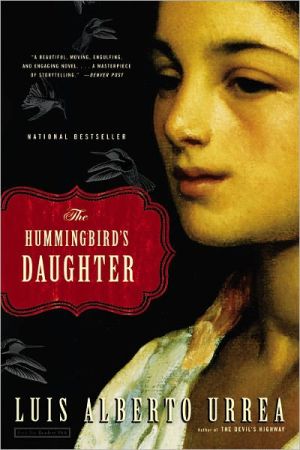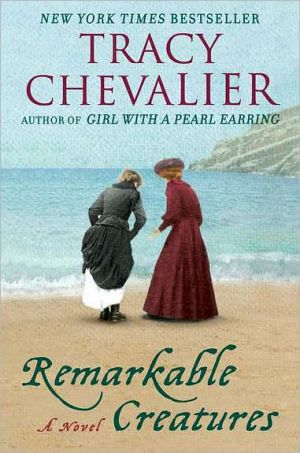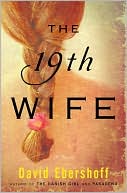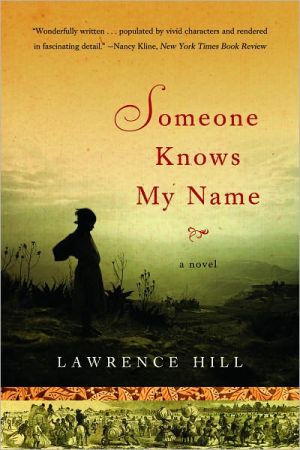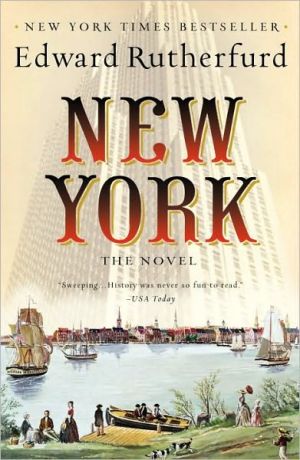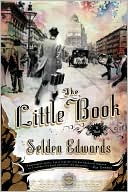Hummingbird's Daughter
The prizewinning writer Luis Alberto Urrea's long-awaited novel is an epic mystical drama of a young woman's sudden sainthood in late 19th-century Mexico.It is 1889, and civil war is brewing in Mexico. A 16-year-old girl, Teresita, illegitimate but beloved daughter of the wealthy and powerful rancher Don Tomas Urrea, wakes from the strangest dream—a dream that she has died. Only it was not a dream. This passionate and rebellious young woman has arisen from death with a power to heal—but it...
Search in google:
This historical novel is based on Urrea's real great-aunt Teresita, who had healing powers and was acclaimed as a saint. Urrea has researched historical accounts and family records for years to get an accurate story.The Washington Post - Joanne OmangTo the very end, The Hummingbird's Daughter is a book of surprises and savory treasures. Urrea's much-praised recent work, The Devil's Highway , was a journalistic re-creation of the deaths of 14 Mexicans who crossed illegally into the U.S. southern desert in 2001. He has loosened his expressive reportorial skills to write lyrical fiction, and we can only be grateful.
The Hummingbird's Daughter\ \ By Luis Alberto Urrea \ Little, Brown\ Copyright © 2005 Luis Alberto Urrea\ All right reserved. \ ISBN: 0-316-74546-4 \ \ \ Chapter One\ ON THE COOL OCTOBER MORNING when Cayetana Chavez brought her baby to light, it was the start of that season in Sinaloa when the humid torments of summer finally gave way to breezes and falling leaves, and small red birds skittered through the corrals, and the dogs grew new coats. \ On the big Santana rancho, the People had never seen paved streets, streetlamps, a trolley, or a ship. Steps were an innovation that seemed an occult work, stairways were the wicked cousins of ladders, and greatly to be avoided. Even the streets of Ocoroni, trod on certain Sundays when the People formed a long parade and left the safety of the hacienda to attend Mass, were dirt, or cobbled, not paved. The People thought all great cities had pigs in the streets and great muddy rivers of mule piss attracting hysterical swarms of wasps, and that all places were built of dirt and straw. They called little Cayetana the Hummingbird, using the mother tongue to say it: Semalu.\ On that October day, the fifteenth, the People had already begun readying for the Day of the Dead, only two weeks away. They were starting to prepare plates of the dead's favorite snacks: deceased uncles, already half-forgotten, still got their favorite green tamales, which, due to the heat and the flies, would soon turn even greener. Small glasses held the dead's preferred brands of tequila, or rum, or rompope: Tio Pancho liked beer, so a clay flagon of watery Guaymas brew fizzled itself flat before his graven image on a family altar. The ranch workers set aside candied sweet potatoes, cactus and guayaba sweets, mango jam, goat jerky, dribbly white cheeses, all food they themselves would like to eat, but they knew the restless spirits were famished, and no family could afford to assuage its own hunger and insult the dead. Jesus! Everybody knew that being dead could put you in a terrible mood.\ The People were already setting out the dead's favorite corn-husk cigarettes, and if they could not afford tobacco, they filled the cigarros with machuche, which would burn just as well and only make the smokers cough a little. Grandmother's thimble, Grandfather's old bullets, pictures of Father and Mother, a baby's umbilical cord in a crocheted pouch. They saved up their centavos to buy loaves of ghost bread and sugar skulls with blue icing on their foreheads spelling out the names of the dead they wished to honor, though they could not read the skulls, and the confectioners often couldn't read them either, an alphabet falling downstairs. Tomas Urrea, the master of the rancho, along with his hired cowboys, thought it was funny to note the grammatical atrocities committed by the candy skulls: Martia, Jorse, Octablio. The vaqueros laughed wickedly, though most of them couldn't read, either. Still, they were not about to lead Don Tomas to think they were brutos, or worse-pendejos.\ "A poem!" Tomas announced.\ "Oh no," said his best friend, Don Lauro Aguirre, the great Engineer, on one of his regular visits.\ "There was a young man from Guamuchil," Tomas recited, "whose name was Pinche Inutil!"\ "And?" said Don Lauro.\ "I haven't worked it out yet."\ Tomas rode his wicked black stallion through the frosting of starlight that turned his ranch blue and pale gray, as if powdered sugar had blown off the sky and sifted over the mangos and mesquites. Most of the citizens of Sinaloa had never wandered more than 100 miles; he had traveled more than anyone else, 107 miles, an epic journey undertaken five days before, when he and his foreman, Segundo, had led a squad of armed outriders to Los Mochis, then to the Sea of Cortes beyond. All to collect Don Lauro Aguirre, arriving by ship from far Mazatlan, and with him, a shipment of goods for the ranch, which they contracted for safe delivery in a Conducta wagon train accompanied by cavalry.\ In Los Mochis, Tomas had seen the legendary object called "the sea."\ "More green than blue," he'd noted to his companions, already an expert on first sight. "The poets are wrong."\ "Pinches poets," said Segundo, hating all versifiers and psalmists.\ They had gone on to greet the Engineer at the docks. He fairly danced off the boat, so charged with delight was he to be once again in the rustic arms of his bon ami tres enchante! Under his arm, carefully wrapped in oilcloth, Aguirre clutched a leather-bound copy of Maxwell's Treatise on Electricity and Magnetism. In Aguirre's opinion, the Scotsman had written a classic! Don Lauro had a nagging suspicion that electricity, this occult force, and magnetism, certainly a force of spirit, could be used to locate, and even affect, the human soul. In his pocket, a greater wonder was hidden: a package of Adams's Black Jack chewing gum-the indescribable flavor of licorice! Wait until Tomas tasted that!\ The ship looked to Segundo like a fat bird with gray wings floating on the water after eating some fish. He was delighted with himself and pointed to the boat and told one of the buckaroos, "Fat bird. Ate some fish. Floating around." He lit a little cigar and grinned, his gums and teeth clotted with shreds of tobacco.\ Segundo had the face of an Aztec carving. He had Chinese eyes, and a sloping Mayan forehead. His nose was a great curving blade that hung down over his drooping bandido mustache. He thought he was handsome. But then, Aguirre also thought himself handsome, though he seemed to have inherited the penchant for fat cheeks that was supposed to be the curse of the Urrea clan. He tried to remember to suck in his cheeks, especially when he was being compared to his friend Tomas Urrea. Where had Tomas's cheeks gone? In bright light, you could see his cheekbones casting shadows as if he were some Indian warrior. And those eyes! Urrea had a ferocious gleam in his eyes-a glare. Men found it unnerving, but women were apparently mesmerized. They were the only green eyes Aguirre had ever beheld.\ "You have much work to do, you lazy bastard," said Tomas.\ The Urrea clan paid Aguirre handsomely to exercise his education for them in elaborate hydrological and construction plans. He had designed a network of vents to carry odors from the house's revolutionary indoor toilet. He had even astounded them all by designing a system of pipes that carried water uphill.\ With liquid on the mind, it was not long before they found the notorious El Farolito cantina. There, they ate raw shellfish still gasping under tides of lime juice and hot sauce and great crystals of salt that cracked between the teeth of the men. Naked women writhed to a tuba-and-drum combo. The men regarded this display with joy, though Aguirre made the effort to feel guilty about it. Lieutenant Emilio Enriquez, in charge of the Conducta wagon train, joined them at the table.\ "Teniente!" Tomas shouted. "What do you hear?"\ "Gentlemen," said Enriquez, arranging his sword so he could sit. "Unrest in Mexico City."\ Aguirre had to admit to himself that this soldier, though an enforcer of the oppressors, was a dashing figure in his medallions and the bright brass fittings on his tunic.\ "What troubles are these, sir?" he said, always ready to hear the government was being overthrown.\ Enriquez twirled the ends of his upswept bigote and nodded to the barkeep, who landed a foaming beer before him.\ "Protesters," he sighed, "have dug up Santa Anna's leg again."\ Everybody burst out laughing.\ The old dictator's leg had once been blown off by a cannonball and buried with full military honors in the capital.\ "Every year, somebody digs it up and kicks it around," Enriquez said.\ Tomas raised his glass of beer.\ "To Mexico," he said.\ "To Santa Anna's leg!" Lieutenant Enriquez announced.\ They all raised their glasses.\ "The Canadians," Enriquez said, as he poured himself a fresh glass of beer, "have launched a mounted police force. They control their Indians."\ "And bandits?" Tomas interjected.\ Tomas Urrea's own father had been waylaid by bandits on the road to Palo Cagado. The bandits, a scruffy lot said to have dropped out of the Durango hills, had been after silver. Tomas's father, Don Juan Francisco, was well known for carrying casks of coin to cover the wages of the three hundred workers on his brother's great million-acre hacienda south of Culiacan. When the outlaws discovered no silver, they stood Don Juan Francisco against an alamo tree and executed him with a volley of ninety-seven bullets. Tomas had been nine at the time. Yet his subsequent hatred of bandidos, as he grew up on the vast ranch, was so intense it transformed into a lifelong fascination. Some even said Tomas now wished he were a bandido.\ "It goes without saying, caballeros. Bandits!" said Enriquez. "Besides, we have already started the rural police program here in Mexico to accost our own outlaws."\ "Gringos! They have copied us again," Tomas announced.\ "Los Rurales," Enriquez continued. "The rural mounted police force."\ "To the Rurales," Tomas said.\ They raised their glasses.\ "To the bandits," said Segundo.\ "And the Apaches," Enriquez said, "who keep me employed."\ They drank the hot brew and pissed out the back door and tossed coins to the women to keep them dancing. Tomas suddenly grabbed a guitar and launched into a ballad about a boy who loved his schoolteacher but was too shy to tell her. Instead, he wrote her a love note every day and tucked it in a tree. One day, while he was placing his latest testimonial in the tree, it was hit by lightning, and not only did this poor boy die, but the tree with its enclosed epistles of love burned to the ground. The teacher ran to the tree in time to behold this disaster. The ballad ended with the melancholy schoolteacher, lonely and unloved, brushing the ashes of the boy's unread notes from her hair before turning out her lamp and sleeping alone for yet another night. The naked dancers covered themselves and wept.\ Early the next morning, the men left the thunderously hungover barkeep and dancers behind and began their long ride inland, to where the hills started to rise and the iguanas were longer than the rattlesnakes. They began to forget the color of the sea.\ Cayetana greeted that dawn with a concoction made with coffee beans and burned corn kernels. As the light poured out of the eastern sea and splashed into windows from coast to coast, Mexicans rose and went to their million kitchens and cooking fires to pour their first rations of coffee. A tidal wave of coffee rushed west across the land, rising and falling from kitchen to fire ring to cave to ramada. Some drank coffee from thick glasses. Some sipped it from colorful gourds, rough clay pots that dissolved as they drank, cones of banana leaf. Cafe negro. Cafe with canela. Cafe with goat's milk. Cafe with a golden-brown cone of piloncillo melting in it like a pyramid engulfed by a black flood. Tropical cafe with a dollop of sugarcane rum coiling in it like a hot snake. Bitter mountaintop cafe that thickened the blood. In Sinaloa, cafe with boiled milk, its burned milk skin floating on top in a pale membrane that looked like the flesh of a peeled blister. The heavy-eyed stared into the round mirrors of their cups and regarded their own dark reflections. And Cayetana Chavez, too, lifted a cup, her coffee reboiled from yesterday's grounds and grits, sweet with spoons of sugarcane syrup, and lightened by thin blue milk stolen with a few quick squeezes from one of the patron's cows.\ On that long westward morning, all Mexicans still dreamed the same dream. They dreamed of being Mexican. There was no greater mystery.\ Only rich men, soldiers, and a few Indians had wandered far enough from home to learn the terrible truth: Mexico was too big. It had too many colors. It was noisier than anyone could have imagined, and the voice of the Atlantic was different from the voice of the Pacific. One was shrill, worried, and demanding. The other was boisterous, easy to rile into a frenzy. The rich men, soldiers, and Indians were the few who knew that the east was a swoon of green, a thick-aired smell of ripe fruit and flowers and dead pigs and salt and sweat and mud, while the west was a riot of purple. Pyramids rose between llanos of dust and among turgid jungles. Snakes as long as country roads swam tame beside canoes. Volcanoes wore hats of snow. Cactus forests grew taller than trees. Shamans ate mushrooms and flew. In the south, some tribes still went nearly naked, their women wearing red flowers in their hair and blue skirts, and their breasts hanging free. Men outside the great Mexico City ate tacos made of live winged ants that flew away if the men did not chew quickly enough.\ So what were they? Every Mexican was a diluted Indian, invaded by milk like the coffee in Cayetana's cup. Afraid, after the Conquest and the Inquisition, of their own brown wrappers, they colored their faces with powder, covered their skins in perfumes and European silks and American habits. Yet for all their beaver hats and their lace veils, the fine citizens of the great cities knew they had nothing that would ever match the ancient feathers of the quetzal. No cacique stood atop any temple clad in jaguar skins. Crinolines, waistcoats. Operas, High Mass, cafe au lait in demitasse cups in sidewalk patisseries. They attempted to choke the gods with New York pantaloons, Parisian petticoats. But still the banished spirits whispered from corners and basements. In Mexico City, the great and fallen Tenochtitlan, among streets and buildings constructed with the stones of the Pyramid of the Sun, gentlemen walked with their heads slightly tilted, cocked as if listening to this puzzling murmur of wraiths.\ They still spoke a thousand languages-Spanish, too, to be sure, but also a thicket of songs and grammars. Mexico-the sound of wind in the ruins. Mexico-the waves rushing the shore. Mexico-the sand dunes, the snowfields, the steam of sleeping Popocatepetl. Mexico-across marijuana fields, tomato plants, avocado trees, the agave in the village of Tequila.\ Mexico....\ All around them, in the small woods, in the caves, in the precipitous canyons of copper country, in the swamps and at the crossroads, the harsh Old Ones gathered. Tlaloc, the rain god, lips parched because the Mexicans no longer tortured children to feed him sweet drafts of their tears. The Flayed One, Xipe Totec, shivering cold because priests no longer skinned sacrifices alive and danced in their flesh to bring forth the harvest. Tonantzin, goddess of Tepeyac, chased from her summit by the very Mother of God, the Virgen de Guadalupe. The awesome and ferocious warrior god, Hummingbird on the Left, Huitzilopochtli. Even the Mexicans' friend, Chac Mool, was lonely.\ Continues... \ \ \ \ Excerpted from The Hummingbird's Daughter by Luis Alberto Urrea Copyright © 2005 by Luis Alberto Urrea. Excerpted by permission.\ All rights reserved. No part of this excerpt may be reproduced or reprinted without permission in writing from the publisher.\ Excerpts are provided by Dial-A-Book Inc. solely for the personal use of visitors to this web site. \ \
\ Joanne OmangTo the very end, The Hummingbird's Daughter is a book of surprises and savory treasures. Urrea's much-praised recent work, The Devil's Highway , was a journalistic re-creation of the deaths of 14 Mexicans who crossed illegally into the U.S. southern desert in 2001. He has loosened his expressive reportorial skills to write lyrical fiction, and we can only be grateful.\ — The Washington Post\ \ \ \ \ Publishers Weekly"Her powers were growing now, like her body. No one knew where the strange things came from. Some said they sprang up in her after the desert sojourn with Huila. Some said they came from somewhere else, some deep inner landscape no one could touch. That they had been there all along." Teresita, the real-life "Saint of Cabora," was born in 1873 to a 14-year-old Indian girl impregnated by a prosperous rancher near the Mexico-Arizona border. Raised in dire poverty by an abusive aunt, the little girl still learned music and horsemanship and even to read: she was a "chosen child," showing such remarkable healing powers that the ranch's medicine woman took her as an apprentice, and the rancher, Don Tom s Urrea, took her-barefoot and dirty-into his own household. At 16, Teresita was raped, lapsed into a coma and apparently died. At her wake, though, she sat up in her coffin and declared that it was not for her. Pilgrims came to her by the thousands, even as the Catholic Church denounced her as a heretic; she was also accused of fomenting an Indian uprising against Mexico and, at 19, sentenced to be shot. From this already tumultuous tale of his great-aunt Teresa, American Book Award-winner Urrea (The Devil's Highway) fashions an astonishing novel set against the guerrilla violence of post-Civil War southwestern border disputes and incipient revolution. His brilliant prose is saturated with the cadences and insights of Latin-American magical realism and tempered by his exacting reporter's eye and extensive historical investigation. The book is wildly romantic, sweeping in its effect, employing the techniques of Catholic hagiography, Western fairy tale, Indian legend and everyday family folklore against the gritty historical realities of war, poverty, prejudice, lawlessness, torture and genocide. Urrea effortlessly links Teresita's supernatural calling to the turmoil of the times, concealing substantial intellectual content behind effervescent storytelling and considerable humor. Agent, Sandra Dijkstra. (May 17) Copyright 2005 Reed Business Information.\ \ \ Library JournalMore than 20 years in the making, this narrative is based on the first 19 years in the life of the author's Mexican great aunt, Teresa Urrea, or Saint Teresa of Cabora (1873-1906). The illegitimate daughter of a poor Indian woman and a wealthy landowner, Teresa is raised on a farm and taught the healing arts by a curandera (female healer) until a near-death experience endows her with the divine gift of healing. Teresa's popularity soars, and she serves as the battle cry for an antigovernment insurrection, after which she and her father are exiled to the United States, where she is not officially recognized as a saint owing to the somewhat unorthodox nature of her work. Urrea (creative writing, Univ. of Illinois, Chicago) has written more a novelized biography than a work of fiction; more research seems to have crept in than creativity. And though he excels at describing the atmosphere of a familiar world, the dialog is often stilted, and the telling of the insurrection and miracles lacks conviction. Appropriate for Hispanic collections. [See Prepub Alert, LJ 1/05.]-Lawrence Olszewski, OCLC Lib., Dublin, OH Copyright 2005 Reed Business Information.\ \ \ \ \ Kirkus ReviewsThe making of a young medicine woman in 19th-century Mexico. Urrea, a Mexican-American best known for his prizewinning nonfiction (The Devil's Highway, 2004, etc.), has based his leisurely account on the life of an ancestor. Cayetana Chavez is 14 when she gives birth to Teresita, the future healer. Cayetana herself is known as the hummingbird, God's messenger, and even more auspicious is the red triangle on her child's forehead. Teresita's birth takes place on one of the four ranches belonging to Tomas Urrea (the author hasn't changed the family name), who is one of the Yori, or white masters; his Indian cowboys and fieldhands are the People, or, in the author's compelling image, nails destined for the hammer. Teresita is one of Tomas's many love children, and he will eventually acknowledge her, for he has always been fond of the People and is a decent man, despite his philandering. His story is interwoven with that of Teresita, who is abandoned by her mother and abused by an evil aunt until the old medicine woman Huila offers her protection. In 1880, Tomas decides to move everybody north to another ranch that will provide greater safety from the long-time dictator Porfirio D'az (the political context is sketchy). Teresita, now 15, comes into her own as midwife and healer-until she is raped and apparently killed by a miner. After she comes back to life during her own wake, the pilgrims start arriving by the thousands, though Teresita denies she is a saint and the nonbeliever Tomas deplores the invasion of his ranch. Eventually, the dictator D'az, getting reports of an insurrection, orders the capture of Teresita and her father. The 19-year-old healer's death sentence is commuted to exile,and she makes a spectacular exit from the country. Only at the end does Urrea fully evoke Teresita's incandescent spiritual power-in a second novel (after In Search of Snow, 1994) that, otherwise, is a mildly engaging look at life on a prerevolutionary Mexican ranch, with amusingly irreverent touches.\ \
